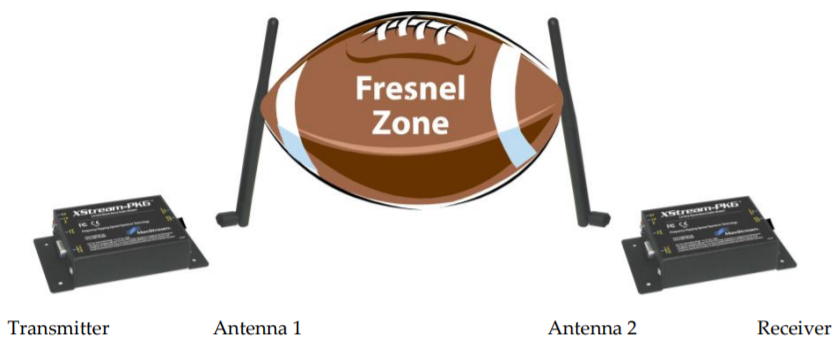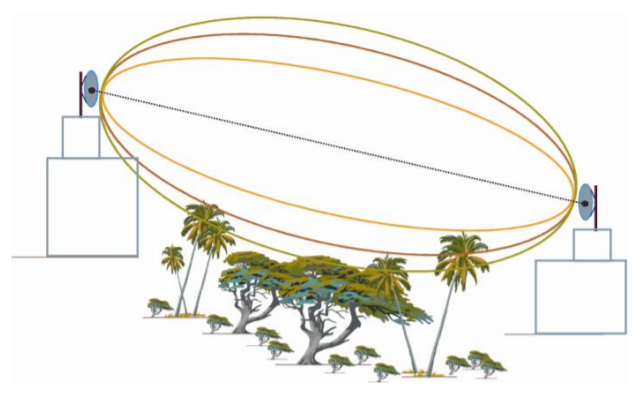Visual vs. RF Line-of-Sight – What is the difference?


Dear followers,
If you own a Medium Range (MR), Long Range (LR) and eXtra Long Range (XLR) radios or kit, you might have noticed that all specification are mentioning “RF line of sight”. But what does this actually mean, how does it differ from “Visual line of sight”? Digi has written a very good document about it, and we would like to summarize its essence here:
Attaining RF Line-of-Sight (LOS) between the sending and receiving antennas is essential in achieving long range in wireless communication systems. There are two types of LOS that are generally used to describe an environment:
- Visual LOS is the ability to see from one site to the other. It requires only a straight linear path between two points.
- RF LOS requires not only visual LOS, but also a football-shaped path free of obstacles for data to optimally travel from one point to another. This football-shaped path is called Fresnel zone.
In order to achieve the greatest range, the football-shaped path in which radio waves travel must be free of obstructions. Buildings, trees or any other obstacles in the path will decrease the communication range. If the antennas are mounted just barely off the ground, over half of the Fresnel zone ends up being obstructed by the earth resulting in significant reduction in range. To avoid this problem, the antennas should be mounted high enough off of the ground so that the earth does not interfere with the central diameter of the Fresnel zone.
It is also important to understand that the environment may change over time due to growing vegetation, building construction, etc. If obstacles exist between two points, the antennas can be raised on one end or on both ends to clear the Fresnel zone of obstructions. How far above the ground and other obstacles the antennas need to be is determined by the diameter of the Fresnel zone. The diameter of the Fresnel zone depends upon the frequency and distances between the two radios. Various data points were inserted into Fresnel zone formulas to provide some points of reference. The following table provides approximate Fresnel zone diameters at 1000 feet, 1 mile, 5 mile and 10 mile ranges:
How far above the ground and other obstacles the antennas need to be is determined by the diameter of the Fresnel zone. The diameter of the Fresnel zone depends upon the frequency and distances between the two radios. Various data points were inserted into Fresnel zone formulas to provide some points of reference. The following table provides approximate Fresnel zone diameters at 1000 feet, 1 mile, 5 mile and 10 mile ranges:
This concept applies to our Medium Range (MR), Long Range (LR) and eXtra Long Range (XLR) radios and kits.
Best regards,
ArduSimple Team
 and
and 



